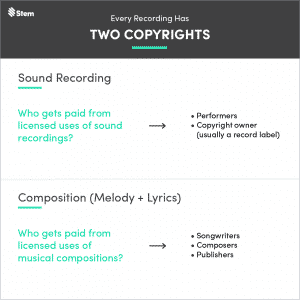Whether you are independent or signed it is vital to your future to understand royalties and publishing. You don’t want to be like R Kelly and have the rights to your music taken from you due to your ignorance. Heres a basic understanding of royalties and how you are paid.
What are royalties?
Royalties are a percentage of a wholesale price. For example, if you have 10% royalties and your album sells for $10, then your royalties are $1 per album.
Theres a few type of royalties every artist needs to understand.
- Mechanical Royalties for artist
- Mechanical Royalties for songwriter, composure, and publisher (Know as “Publishing”)
- Performance rights royalties
- Synchronization Royalties
- Print Royalties
Whenever you record a song in the studio, the original file is consider your “masters”. Each recording has two components; the sound recording and the composition (melody/ lyrics). No one can copy that record without a license called compulsory license. Once they obtain the rights to distribute copies of the master file in the form of cds, vinyl, etc, you are paid out mechanical royalties. Pretty much mechanical royalties are monies paid to the copyright holder for reproduced songs.

Mechanical royalties for the sound recording are paid to the performer (artist) and the copyright holder which is usually the label. If you are not signed to a label then you would receive your full percentage. If you are signed then your percentage is based off your deal. (example approve)
Mechanical royalties for the composition are paid out to the songwriter, composure, and publisher. These mechanical royalties to the songwriter (50%) and publisher (50%) are usually called the “Publishing”. If you have registered as a publisher then you would receive both percentages.
Performance rights royalties are paid out to the writer anytime the record is performed publicly .This includes nightclubs, radio stations, streaming services, live events and even elevators. These royalties are collect through performing right organization (PRO) such as ASCAP, BMI, and SESAC.
Synchronization royalties are paid out to the songwriter and publisher anytime a song is in the background for movies, tv shows, and commercials.
Print royalties are paid out to the songwriter and publisher whenever sales are made on printed music sheets.
Understanding royalties and publishing can be confusing but I hope this information helped. If you would like to dive deeper into understanding royalties and the music business , I would suggest reading, “All You Need to Know About he Music Business” by Donald S. Passman.
